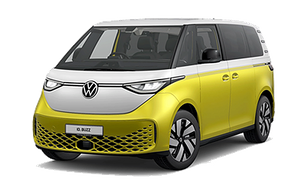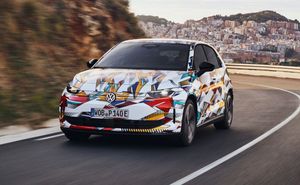For those who don’t know, Jeep is now part of the Stellantis megacorp, along with the likes of Peugeot, Citroen, Fiat, Vauxhall and Alfa Romeo (plus a few others). One of many advantages of being in an automotive group as vast as this means that you can borrow as many bits from your siblings as you like. The Compass, for example, shares a lot of its underpinnings with the Alfa Romeo Tonale and Fiat 500X and is built in the same Italian factory as its stablemates.
Design
Although Jeep facelifted the Compass last year, the exterior design remains largely as it was when it first appeared in 2018. Which is no bad thing, because it still looks neat, well proportioned and, more importantly, very Jeep-like. The familiar seven hole front grille is neatly integrated into the nose of the car while the squared-off wheel arches and protective lower trims tick all the right boxes for those who want their Jeep to look like a Jeep. If it ain’t broke, don’t fix it.
Inside, the current version is a cut above the original, which was criticised for its low-grade plastics and slightly budget feel. The new interior, which arrived as part of last year’s facelift features a traditional dashboard that has a large 10.1-inch infotainment system at its heart. A secondary 10.25-inch display sits behind the steering wheel and is both clear and easy to navigate. The main infotainment system runs Jeep’s new uConnect 5 software which looks and feels considerably better than the previous system. Equipped with a faster processor, Jeep claims that it is up to five times faster than the old set-up. However, it’s still a little laggy in places with some screens taking a while to fully load.
Look around and it’s clear that Jeep has tried hard to narrow the gap in quality that once existed between the Compass and its key rivals. The contrast stitching on the dashboard rail is a neat touch while the use of thin metallic strips add to the premium feel. There are still some bits that feel a bit cheap such as the meanly-padded armrest and the fiddly mirror adjusters, but overall, it’s not a bad place to spend time. Space in the rear is fine given the Compass’s relatively modest exterior dimensions with all but the leggiest of passengers having decent levels of leg and head room.
Boot space is, again, okay, but nothing out of the ordinary with a capacity of 438 litres with the rear seats in position. With the hybrid system’s battery located in the floor, the 4xe is 18-litres down on capacity compared to the standard petrol one. The raised height also makes it a slightly less practical shape, but on the plus side, there’s a hidden compartment for charging cables.
Engines and performance
The Compass 4xe comes with a plug-in hybrid drivetrain that combines a 1.3-litre four-cylinder turbocharged engine and an electric motor. The combustion engine develops 128bhp with the electric motor adding a 109bhp boost. At 11.4kWh, the Compass’s battery isn’t the biggest on the market and delivers a rather modest all-electric range of around 30 miles. That’s enough to put the Compass in the 12% company car tax band, which is good but not exactly class leading. If reducing your tax bill is the main reason for switching to a PHEV, there are better options out there that can deliver more electric-only miles. As for charging, the Compass’s 11.4kWh pack can be recharged from empty to full in just under three hours on a 7kWh home wallbox.
In terms of driving, the Compass does most things well, but doesn’t stand out in any particular area. The standard automatic gearbox is slow to react and seems to get confused as to what ratio to be in, especially if you try to drive with any degree of enthusiasm. Unlike many plug-in hybrids, the Compass splits its power delivery with the petrol engine driving the front wheels and the electric motor powering the rears. Although this simplifies the engineering, it does mean that you need to retain charge in the battery if you plan to use the Compass off road. Drain the battery and you’ll be stuck with front-wheel drive only.
For owners who do want to take the Compass off the beaten track, Jeep equips every model with its Selec-Terrain system that modulates power delivery and maximises traction. Owners can select from up to three driving modes: Auto, Snow and Sand, Mud and Sport with the range-topping Trailhawk version coming with a fourth mode called Rock. Continuing the outdoor theme, the Compass is also rated to tow a braked trailer with a maximum capacity of 1,250kg.
Value for money and equipment
The Compass 4xe is priced from £41,455 and comes with three trim options: Limited, S and Trailhawk. All three come with decent levels of standard kit, with even the entry-level model featuring LED headlights, 18-inch alloy wheels and preconditioning functionality for the PHEV system.
Verdict
If you like the idea of driving a rugged Jeep SUV but don’t want to spend half your life at a filling station, the Compass 4xe could be the perfect option. It can return up to 50mpg when driven sensibly and if your daily commute is around 20 miles, you’ll be able to do most of it on electric power only. Equipment levels are decent across the board and the Compass delivers a perfectly fine and comfortable drive.









.jpeg)
.jpeg)
.jpeg)
.jpeg)
.jpeg)
.jpeg)
.jpeg)
.jpeg)


.jpeg?width=1500&height=1000)





